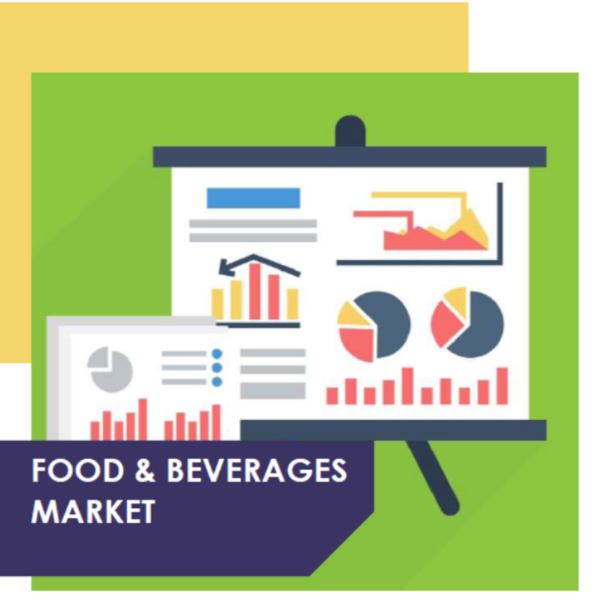First and Last-mile Delivery Market Overview
Global First and Last-mile Delivery Market size accounted for USD 1.14 Billion in 2023 and is estimated to account for 1.35 Billion in 2024. The Market is expected to reach USD 2.05 Billion by 2034 growing at a compound annual growth rate (CAGR) of 6.21% from 2024 to 2034. The First and Last-mile Delivery Market refers to the transportation and delivery of goods from a central hub, such as a warehouse or distribution center, to the final destination, which is typically a customer’s doorstep or a specific location within their premises. The market encompasses both the initial movement of goods from the origin point (first mile) and the final delivery to the end-user (last mile).
The First and Last-mile Delivery Market has gained significance with the rise of e-commerce, urbanization, and increasing consumer demands for faster, more convenient deliveries. It includes various modes of transportation, technologies and service providers aiming to optimize efficiency, reduce costs, and enhance the customer experience.
Global First and Last-mile Delivery Market Synopsis
 First and Last-mile Delivery Market Dynamics
First and Last-mile Delivery Market Dynamics
The major factors that have impacted the growth of First and Last-mile Delivery Market are as follows:
Drivers:
Ø Technological Advancements
Technologies like GPS tracking, route optimization software, drones, and autonomous vehicles are improving the efficiency of first and last-mile deliveries. These innovations allow companies to deliver goods faster, reduce costs, and provide real-time updates to customers. Consumers now expect same-day or even next-hour delivery options. Meeting these expectations drives innovation in last-mile delivery processes, encouraging companies to adopt technologies such as route optimization, delivery lockers, and autonomous vehicles.
Restraint:
- Perception of High Delivery Costs and Workforce Shortages
First and last-mile deliveries are often the most expensive parts of the logistics process, particularly last-mile delivery. The need for quick, individualized deliveries (especially in urban areas) increases operational costs due to fuel, labor, and vehicle maintenance. The lack of delivery density (few deliveries per trip) can make last-mile services particularly inefficient. The last-mile delivery sector relies heavily on human labor, particularly for driving and handling goods. The growing demand for deliveries has led to a shortage of delivery drivers, increasing labor costs and creating operational bottlenecks. Retaining a workforce for the intensive demands of last-mile logistics can be challenging.
Opportunity:
⮚ Delivery-as-a-Service (DaaS) Platforms
With the growing complexity of logistics, many retailers and small businesses are turning to third-party logistics (3PL) and Delivery-as-a-Service (DaaS) platforms. These services allow companies to outsource their first and last-mile logistics, reducing the burden of maintaining fleets, labor, and technology. The rise of DaaS offers an opportunity for logistics providers to offer scalable, on-demand delivery solutions. Smart lockers and pickup points offer an alternative to home delivery, reducing failed delivery attempts and increasing convenience for consumers. This system provides an efficient way to deliver to high-density residential areas and businesses. Companies can partner with retailers, transportation hubs, and other locations to install pickup points, optimizing last-mile logistics.
First and Last-mile Delivery Market Segment Overview
By Goods Type
 Based on Goods Type, the market is segmented based on dry goods, postal, and liquid goods. The dry goods segment dominant the market. The growth of the segment is on account of online purchases of dry goods, which are delivered within a certain lead-time. If the promised lead-time is two days, the dry goods are delivered the same day or before time. This creates an opportunity to provide discounts on shorter lead-times in specific areas, e.g., same-day delivery could be discounted if a company is planning on visiting that area today.
Based on Goods Type, the market is segmented based on dry goods, postal, and liquid goods. The dry goods segment dominant the market. The growth of the segment is on account of online purchases of dry goods, which are delivered within a certain lead-time. If the promised lead-time is two days, the dry goods are delivered the same day or before time. This creates an opportunity to provide discounts on shorter lead-times in specific areas, e.g., same-day delivery could be discounted if a company is planning on visiting that area today.
By Mode of Operation
Based on Mode of Operation, the market segment has been divided into light-duty vehicles, medium-duty vehicles, heavy-duty vehicles, self-driving vans and trucks, and delivery bots. The delivery bots segment dominant the market. During the pandemic, the employment of delivery robots increased as these little vehicles met the demand for social distancing by transporting food and vital goods to consumers. For last-mile deliveries, companies are exploring the delivery bot option.
By Application
Based on Application, the market segment has been divided into logistics and transportation, retail and food, healthcare & pharmacy and others. The retail and food segment dominant the market. The first mile in eCommerce refers to the distance between the retailer and the courier who will deliver the goods to the customer’s office, house, collection location, or smart locker. Any worldwide eCommerce shipping must have a smooth first mile delivery. This means that the goods will have a better chance of moving quickly and smoothly through the next stages of the B2C supply chain.
By Solution
Based on Solution, the market segment has been divided into Hardware and Software. The Hardware segment dominant the market. Hardware segment accounts for the highest market size and the growth of the segment is due to the use of hardware units on vehicles. Consumers can track their packages using the same technology that is used in route planning tools. Automated route planning software is a management system that uses hardware devices to track the location of each vehicle.
Global First and Last-mile Delivery Market Regional Analysis
Based on region, the global First and Last-mile Delivery Market has been divided into North America, Europe, Asia-Pacific, the Middle East & Africa, and Latin America. North America is projected to dominate the use of the First and Last-mile Delivery Market followed by the Asia-Pacific and Europe regions.
 Global First and Last-mile Delivery North America Market
Global First and Last-mile Delivery North America Market
North America holds a dominant position in the First and Last-mile Delivery Market. North America, led by the United States, has one of the most mature e-commerce markets globally. This has spurred significant investment in last-mile delivery solutions, including the adoption of autonomous vehicles, drones, and electric vehicles (EVs). The region also experiences high labor costs and driver shortages, driving the shift towards automation and crowdsourced delivery models and the region has a well-developed e-commerce infrastructure, driving demand for efficient delivery services.
Global First and Last-mile Delivery Asia-Pacific Market
The Asia-Pacific region has indeed emerged as the fastest-growing market for the First and Last-mile Delivery Market industry. The Asia-Pacific region is one of the fastest-growing markets for first and last-mile delivery, driven by countries like China, India, Japan, and Southeast Asia. The growing urban population and congested cities in Asia drive the need for innovative last-mile solutions, including the use of drones, electric scooters, and localized delivery hubs and the region is experiencing the fastest growth in e-commerce, driven by countries like China and India.
Competitive Landscape
The global First and Last-mile Delivery Market is highly competitive, with numerous players offering a wide range of software solutions. The competitive landscape is characterized by the presence of established companies, as well as emerging startups and niche players. To increase their market position and attract a wide consumer base, the businesses are employing various strategies, such as product launches, and strategic alliances.
Prominent Players:
- Sprinter
- UPS Supply Chain Solutions
- DHL Supply Chain & Global Forwarding
- FedEx
- Kuehne + Nagel
- SF Express
- XPO Logistics
- DB Schenker Logistics
- Nippon Express
- GEODIS
Scope of the Report
Global First and Last-mile Delivery Market, by Goods Type
- Dry goods
- Postal
- Liquid goods
Global First and Last-mile Delivery Market, by Mode of operation
- Light-duty vehicles
- Medium-duty vehicles
- Heavy-duty vehicles
- Self-driving vans
- Trucks and delivery bots
Global First and Last-mile Delivery Market, by Application
- Logistics and transportation
- Retail and food
- Healthcare & pharmacy
- Others
Global First and Last-mile Delivery Market, by Solution
- Hardware
- Software
Global First and Last-mile Delivery Market, by Region
- North America
- US
- Canada
- Mexico
- Europe
- UK
- Germany
- France
- Italy
- Spain
- Benelux
- Nordic
- Rest of Europe
- Asia Pacific
- China
- Japan
- South Korea
- Indonesia
- Austalia
- Malaysia
- India
- Rest of Asia Pacific
- South America
- Brazil
- Argentina
- Rest of South America
- Middle East & Africa
- Saudi Arabia
- UAE
- Egypt
- South Africa
- Rest of Middle East & Africa
| Parameters | Indicators |
|---|---|
| Market Size | 2033: $2.05 Billion |
| CAGR | 6.21% CAGR (2023-2033) |
| Base year | 2022 |
| Forecast Period | 2023-2033 |
| Historical Data | 2021 |
| Report Coverage | Revenue Forecast, Competitive Landscape, Growth Factors, and Trends |
| Key Segmentations | Goods Type, Mode of Operation, Application, Solution |
| Geographies Covered | North America, Europe, Asia-Pacific, Latin America, Middle East, Africa |
| Key Vendors | Sprinter, UPS Supply Chain Solutions, DHL Supply Chain & Global Forwarding, FedEx, Kuehne + Nagel, SF Express, XPO Logistics, DB Schenker Logistics, Nippon Express and GEODIS. |
| Key Market Opportunities | • Delivery-as-a-Service (DaaS) Platforms • Smart Lockers and Pickup Point |
| Key Market Drivers | • Technological Advancements • Customer Expectations for Fast and Flexible Delivery |
REPORT CONTENT BRIEF:
- High-level analysis of the current and future First and Last-mile Delivery Market trends and opportunities
- Detailed analysis of current market drivers, restraining factors, and opportunities in the future
- First and Last-mile Delivery Market historical market size for the year 2021, and forecast from 2023 to 2033
- First and Last-mile Delivery Market share analysis at each product level
- Competitor analysis with detailed insight into its product segment, Government & Defense strength, and strategies adopted.
- Identifies key strategies adopted including product launches and developments, mergers and acquisitions, joint ventures, collaborations, and partnerships as well as funding taken and investment done, among others.
- To identify and understand the various factors involved in the global First and Last-mile Delivery Market affected by the pandemic
- To provide a detailed insight into the major companies operating in the market. The profiling will include the Government & Defense health of the company’s past 2-3 years with segmental and regional revenue breakup, product offering, recent developments, SWOT analysis, and key strategies.










